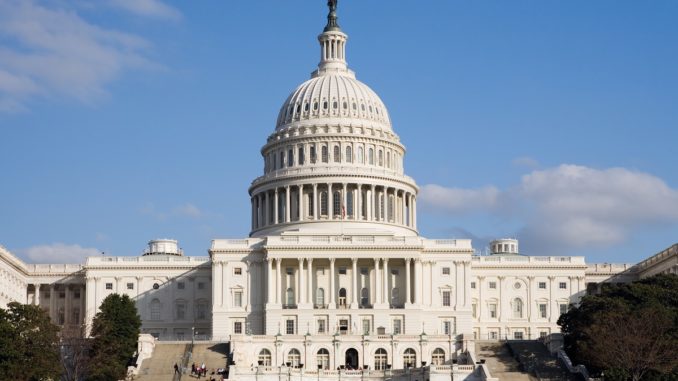
Your Daily Polling Update for Tuesday, November 10, 2020
WHAT HAPPENED?
A hard look at the national polls: Part one of a series on 2020 polling
By Ron Faucheux
Four years ago, the polling industry suffered a big blow to its reputation. Despite the accuracy of many individual polls, the overall picture that polls painted of the 2016 election had Hillary Clinton winning and Donald Trump losing––and that picture was wrong.
This year, polls painted an overall picture of Joe Biden winning and Trump losing, and that picture was right. However, the polling industry is now taking an even harder hit than it did four years ago. Reasons for that include inflated poll margins for Biden and predictions of a “blue wave” in House and Senate races that didn’t pan out.
Leaving faulty punditry and predictions aside––how did the polls really do?
- National polls came close to getting Joe Biden’s vote right. He averaged 51.5 percent in the final 21 national polls. In the actual election, he received 50.7 percent of the vote, based on current counts. The gap was less than a point, and as final votes from the west coast come it, the gap could shrink even further.
- National polls, on the other hand, substantially shortchanged President Trump’s strength. He averaged 43.3 percent in the final national polls. In the actual election, he received 47.5 percent of the vote, based on current counts. Some polls missed Trump’s vote by as much as 9 points; only one came within 1 point.
- The 21 final national polls pegged Biden’s average margin over Trump to be much higher than it turned out to be: 8.1 points in the polls versus 3.2 points in the actual vote, as of today’s vote count.
Digging deeper––
- All 21 of the final national polls showed Biden ahead. Of those, 17 polls had Biden leading by 7 to 12 points and four had him leading by 5 points or less. One had him leading by a single point.
- Polls that overshot Biden’s national lead included: Redfield & Wilton, which had his lead at 12 points; Quinnipiac University, USC Dornsife and Qriously, each had his lead at 11 points; and the Wall Street Journal/NBC, Economist/YouGov and CNBC/Change Research polls, which all showed 10-point margins. Clearly, these polling operations have some explaining to do.
- The three final polls that came closest to Biden’s current 3-point vote margin over Trump were: The Hill/HarrisX and IBD/TIPP polls, both of which had Biden ahead by 4 points; and the Emerson College poll, which had him leading by 5 points.
Let’s now consider the key question: Why were most of these national polls so far off?
Here are possible reasons:
- The normal “margin of error.” Possible error in most polls is usually plus-or-minus 3 points. While this may explain why polls missed the exact mark, it doesn’t explain why errors were mostly in one partisan direction––showing a bigger Democratic lead than actually materialized.
- Some pollsters screwed up. Administration of some polls may have been sloppy, questionnaires may have been poorly written and sample targets and weighting may have been biased. While this doesn’t apply to every––or even most––polls, it may explain why some of the results were off track.
- Donald Trump tends to close strong. In both 2016 and 2020, he made gains in the final hours of the campaign that were too late for polls to catch. Polls released the day before the November 3rd election showed that Biden’s margins in Pennsylvania, Michigan and Nevada were, indeed, declining. Polls in Arizona, Georgia and Nevada were very close at the end, as are current vote counts. Remember: polls are snapshots, not crystal balls.
- There really is a “hidden” Trump vote. This is the easiest and maybe the best explanation, something we warned about in this newsletter before the election. Some voters may not have wanted to admit they were voting for Trump for fear of social ostracism or professional retribution, especially in such a bitterly polarized election…. Most pollsters didn’t find this hidden vote because they didn’t believe it existed; of those who thought it may have existed, many didn’t know how to measure it…. Admittedly, it’s difficult to determine the exact size of a hidden vote in any circumstance, especially when pollsters are using a variety of survey platforms (live phone, automated phone and online interviewing) that may relate to the anonymity of the voter’s choice. A hidden Trump vote of about 4 percent would explain the gap between his nationwide polling strength and the actual vote count; but this clearly needs further study before conclusions are reached.
NOTE ON THE SERIES: The purpose of this series is neither to indict nor to vindicate the polling industry. We simply want to present the facts and explain, to the best of our ability with the data we have, what may have happened and why.
- The first part of this series (today) focuses on national polling.
- The second part of the serieswill focus on state polls in the presidential election.
- The third part will focus on Senate and gubernatorial polls.
PERSONAL NOTE: Neither I nor my firm, Certus Insights, conducted any of the public polls from this year’s presidential, Senate or gubernatorial races that we are analyzing.
NEXT UP IN LUNCHTIME POLITICS:
A LOOK AT STATE POLLS IN THE PRESIDENTIAL RACE
Subscription note: If you ever stop receiving Lunchtime Politics, check your spam or junk folders. Sometimes, for mysterious reasons, the newsletter may re-route to there. Please know that we will never take you off our subscriber list unless you ask us to do so.
Publication schedule: Lunchtime Politics will publish as needed for the rest of the year. Thanks to all our readers and best of health, Ron
Follow here to get the latest updates on the Lunchtime Politics.

Be the first to comment